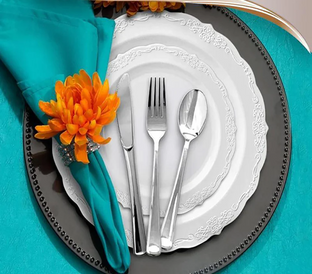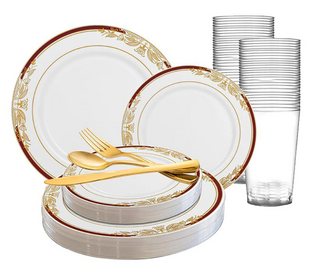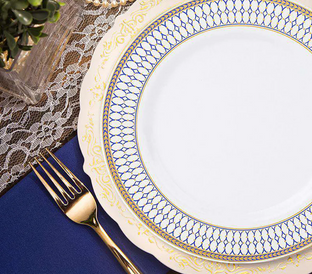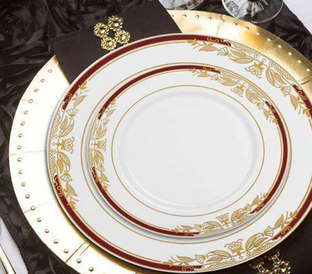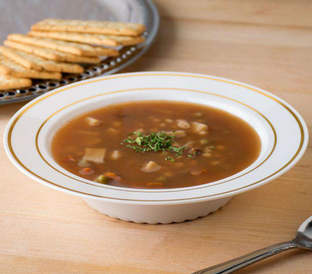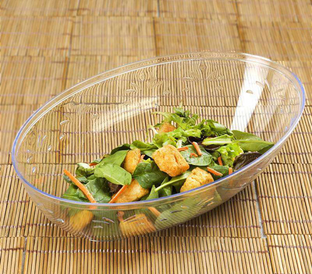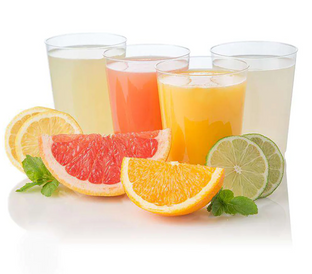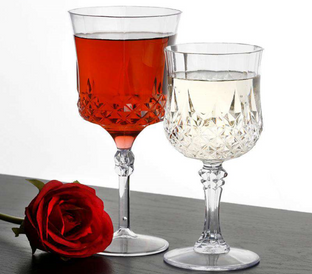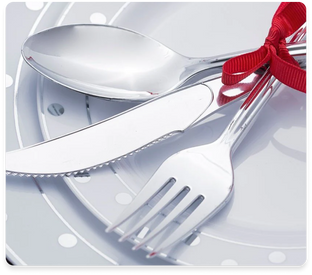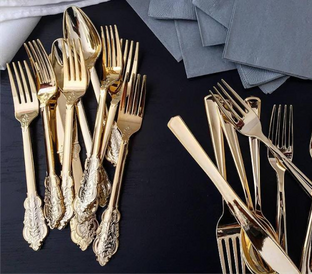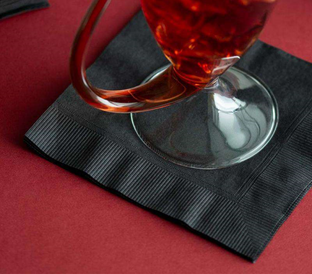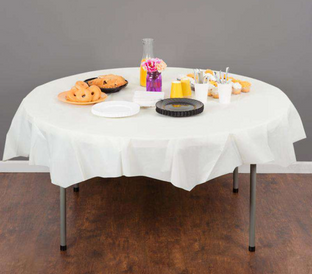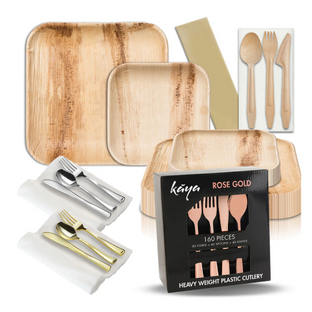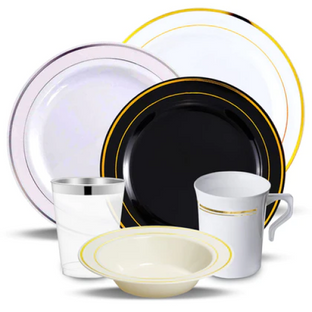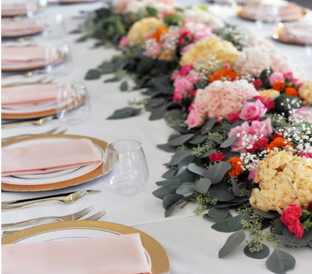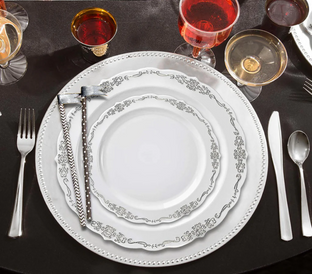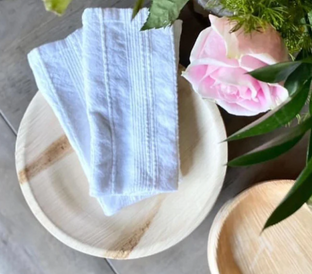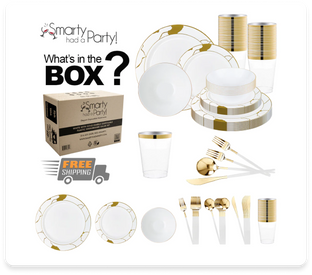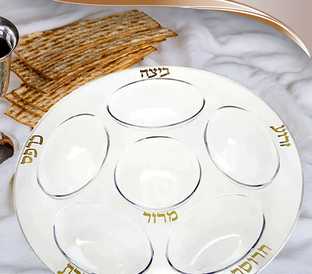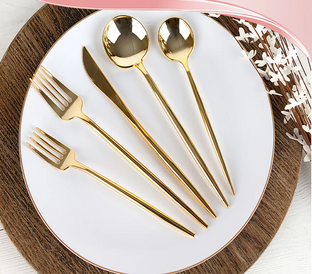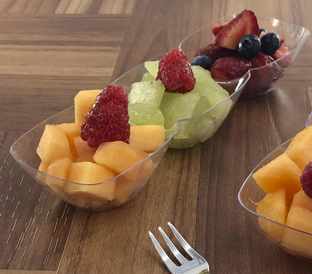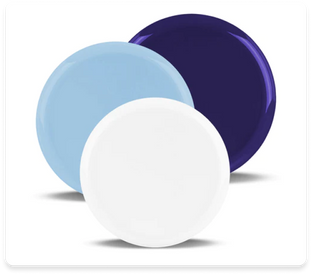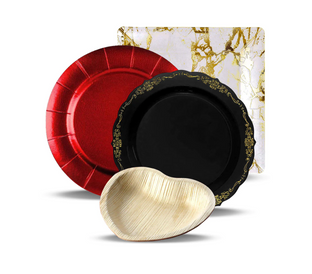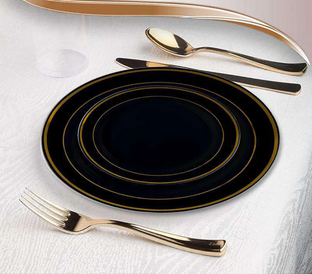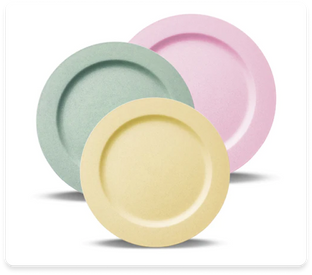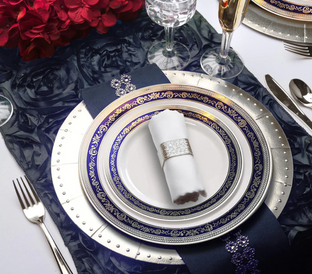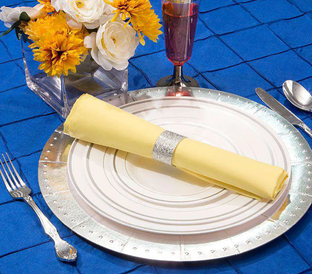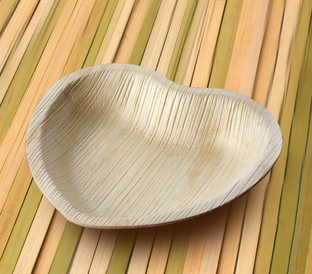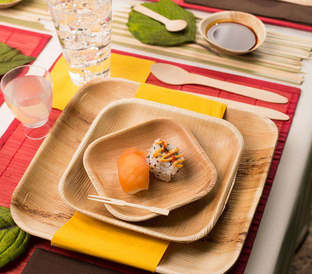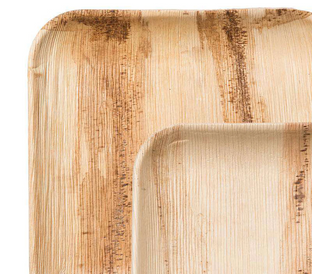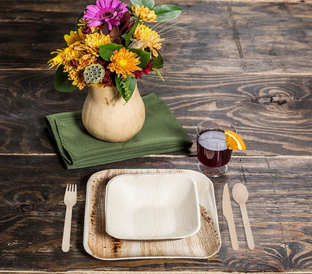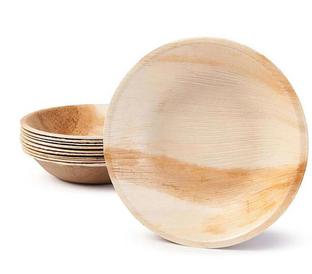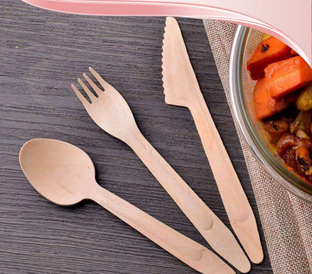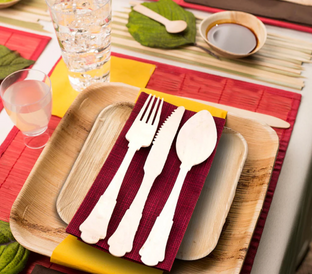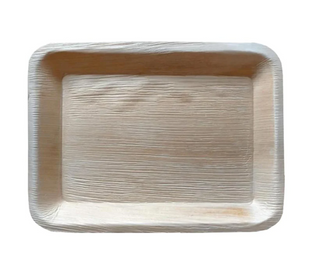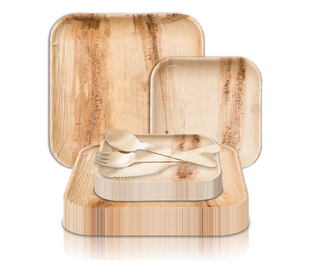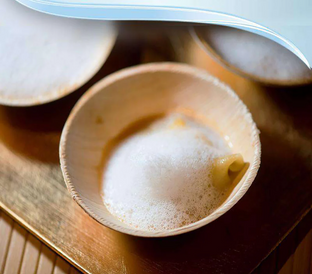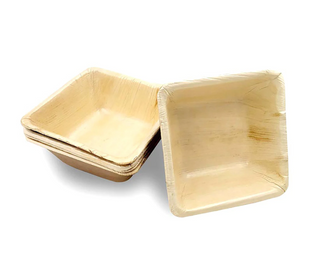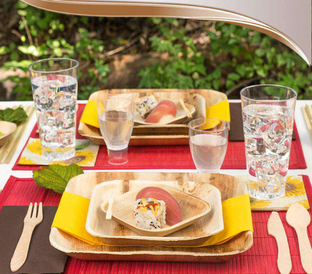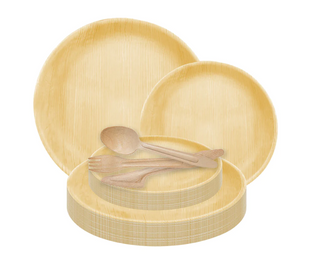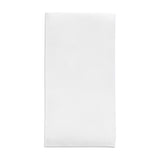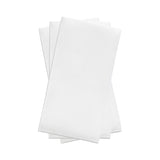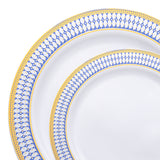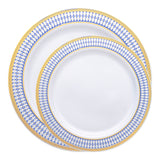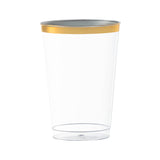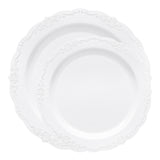
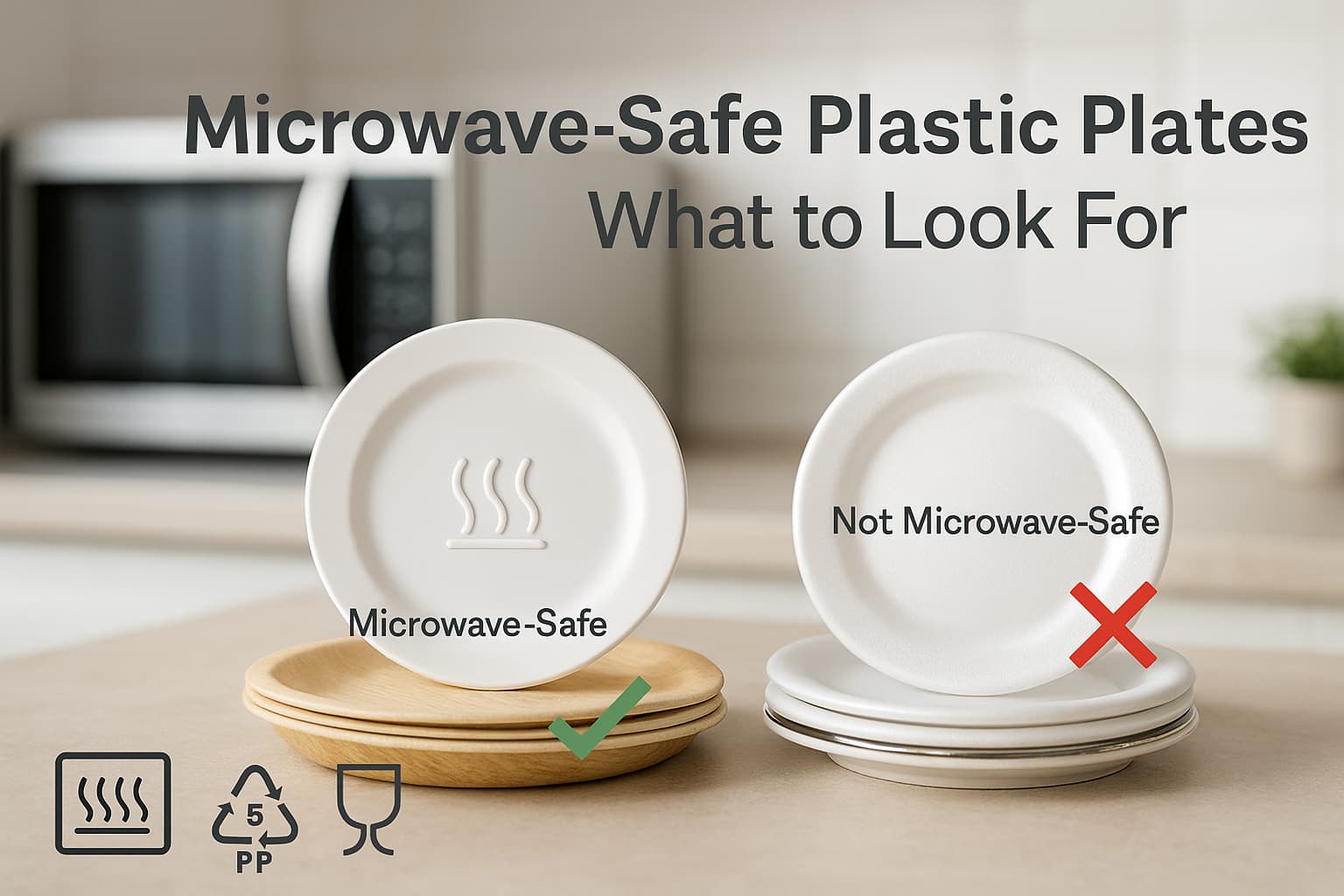
How to Tell If a Plastic Plate Is Safe for Microwaves
Heating tonight's leftovers shouldn't feel like a chemistry lesson. Yet with so many markings, numbers, and mixed advice online, it's normal to ask: Are my plates actually safe to use in the microwave? This guide breaks down everything you need to know—clearly and practically—so you can choose and use microwave-safe plastic plates with confidence at home, in dorms, or for cleanup after parties.
Microwave-Safe Symbol Meaning: Decoding the Microwave Proof/Safe Sign on Plastic
Flip most plates over and you'll find tiny clues that answer the big question: can this go in the microwave? The fastest indicator is the microwave-safe symbol, sometimes called the microwave proof symbol—but it's easy to misread or confuse with other markings. Here's how to decode it confidently.
What the Microwave-safe Symbol Looks Like
- Three wavy lines: The most common icon. It may appear alone or inside a square (representing a microwave cavity).
- Microwave outline: A little box with waves or radiating lines.
- Text claims: "Microwave Safe,'' "Microwavable," or "For Reheating."
- Qualifiers: Phrases like "reheat only,'' "short bursts," or temperature caps such as "≤100°C / 212°F."
Key idea: Symbols indicate the item was designed and tested for typical microwave reheating when used as directed—not for intense, prolonged cooking cycles.
What the Symbol Does—and Doesn't—Promise
It does:
- Signal that the plate can withstand normal microwave conditions (steam, quick heating, and moderate temperatures).
- Assume food is present on the plate (microwaving empty plastic can cause warping).
It doesn't:
- Guarantee safety if the plate is cracked, deeply scratched, or warped.
- Mean the item is oven-safe or broiler-safe (different tests, much higher heat).
- Replace common sense: oily and sugary foods can create localized hot spots above the boiling point of water.
Where to Look—and What Else to Check
- Underside or rim of the plate, original packaging, or the product description.
- Instructions: Time and temperature guidance matters (e.g., "30–60 second intervals,'' "reheat only").
- Condition: Retire plates with clouding or deep scratches—surface wear can reduce performance.
Quick Pre-microwave Checklist
- Load the plate: Always heat it with food or liquid on it.
- Use short bursts: 30–60 seconds at a time; stir or rotate between intervals.
- Vent covers: If you use a lid, leave a small steam gap.
- Watch for hot spots: Cheese, butter, and sauce edges heat faster—check and stir them.
Bottom Line
If you see the microwave-safe symbol (or explicit "microwave safe" text) and you follow the product's time/temperature directions, you're set for everyday reheating. If the symbol is missing or ambiguous, treat the plate as if it is not microwave-safe and choose dinnerware that's clearly labeled for microwave use—or opt for naturally heat-tolerant materials.

Microwave Safe Plastic Numbers Explained
Those tiny numbers inside a recycling triangle—resin identification codes—tell you the type of plastic, not whether an item is heat-safe. That's the crucial distinction. While certain plastics are often used in microwaveable products, the number alone does not guarantee that a plate is safe to microwave. Always look for a microwave-safe symbol or explicit wording, then use the guidelines below to understand what the codes imply about typical heat behavior.
How to Read the Numbers (and What They Actually Mean)
- They identify material, not safety tests. A plate can be #5 PP and still not be microwave-safe unless the manufacturer says so.
- Formulation & thickness matter. Additives, wall thickness, and manufacturing methods alter how a plate responds to heat.
- Condition counts. Scratches and wear reduce performance by creating weak points where warping can start.
- Label > number. If labeling is missing or ambiguous, treat the item as not microwave-safe.
Quick Reference Table (Resin Codes vs. Typical Microwave Guidance)
| Resin Code | Name (Common Abbrev.) | Typical Uses | General Microwave Guidance* |
|---|---|---|---|
| #1 | PET / PETE | Beverage bottles, deli clamshells | Avoid; not designed for reheating—prone to warping/deformation. |
| #2 | HDPE | Milk jugs, sturdy bottles | Usually not intended for microwaves unless clearly labeled. |
| #3 | PVC | Legacy films, some packaging | Avoid microwaving; not formulated for this use. |
| #4 | LDPE | Squeeze bottles, thin bags | Generally not microwave-safe unless explicitly stated. |
| #5 | PP (Polypropylene) | Takeout lids, some food containers | Often used in microwaveable products, but label still required. |
| #6 | PS (Polystyrene/foam) | Foam plates, cups; rigid disposables | Avoid; softens/warps under heat—poor microwave candidate. |
| #7 | Other (PC, bioplastics, blends) | Specialty items, mixed resins | Varies widely; treat as not safe unless unmistakably labeled. |
What About "Is 5 PP Plastic Microwave Safe?"
You'll see this question everywhere. Polypropylene (#5) is chemically stable and widely used in containers designed for microwaves because it tolerates heat better than many alternatives. But PP comes in many formulations. Without a microwave-safe symbol or clear wording, the safest assumption is that it is not. If labeled microwave-safe, still follow time/temperature limits and use short bursts.
Red Flags That Outweigh the Number
- No symbol, vague labeling, or "for serving only."
- Visible wear: deep scratches, cloudiness, warping, or a brittle feel.
- Strong odors during heating or a "hot plastic" smell—stop and switch to a different material.
- Food type: high-fat and high-sugar foods can create hot spots that stress plastics.
Practical Takeaway
Use the resin code as context, not permission. The microwave-safe symbol (or explicit "microwave safe" text) is the real green light, and it should guide your decision along with the plate's condition and the food you're heating.
Are Plastic Plates Microwave Safe? Risks, Temperatures, and Best Practices
Short answer: sometimes—but only when the plate is explicitly labeled for microwave use. The phrase "microwave-safe plastic plates" refers to items that have been designed and tested to tolerate typical reheating conditions. Plates without a microwave-safe symbol (or clear wording) should be treated as not microwave-safe. Here's how to think about risk, temperature, and technique so you can reheat with confidence.
Why Microwaving Plastic Can Be Tricky
Microwave ovens heat food unevenly. Water-rich areas warm toward 212°F / 100°C, but fatty or sugary spots can exceed that, creating localized hot zones. Plastics, especially thinner or more brittle types, may soften, warp, or degrade at these temperatures. Steam and pressure under a tight cover can also stress a plate.
Common Risk Factors
- No microwave-safe labeling: Symbols and clear statements are the only reliable green light.
- Thin or rigid disposables: More prone to softening or warping under heat.
- Wear and tear: Scratches, clouding, or warping indicate reduced durability.
- Food type: Cheese, oils, butter, and syrups superheat and create hot spots.
- Time + power: Long runs at full power push plastics beyond their comfort zone.
Temperature Realities In a Microwave
- Steam + hot spots: Even if the average dish temperature seems moderate, edge zones and oily pockets can run hotter.
- Empty heating is a no-go: With no food to absorb energy, the plate itself can overheat rapidly.
- Covers matter: Tight, unvented lids trap pressure and intensify stress on plastics.
Best Practices for Safer Reheating
- Confirm the label: Use only microwave-safe plastic plates (look for the icon or wording indicating this).
- Reheat, don't cook: Stick to short intervals (30–60 seconds), pausing to stir/rotate.
- Load the plate: Never run plastic empty; food or liquid should cover most of the surface.
- Vent covers: If using a lid or wrap, leave a small gap to release steam.
- Mind the menu: For oily, cheesy, or sugary foods, reduce power, shorten intervals, and stir more often.
- Inspect before use: Retire scratched or warped plates; they're more likely to fail under heat.
- When unsure, switch materials: Glass or ceramic labeled microwave-safe is a safe fallback.
Plastic plates can be microwaveable only when designed and labeled for it, used briefly, and treated with care. If you're ever in doubt, move the food to a microwave-safe glass or ceramic dish.

Safe Plastics for Microwaves vs. Materials to Avoid: What Materials Are Microwave Safe?
When deciding whether a plate belongs in the microwave, consider material first, label second, and condition third. Some materials handle quick reheating well; others soften, warp, or trap heat in ways that stress the plate (and your fingers). Here's how to choose wisely and keep your routine simple.
Plastics Commonly Used for Microwave-safe Products
-
Polypropylene (PP, often marked "#5")
- Why it's used: Chemically stable, tolerates typical reheating, and resists moisture.
- Caveat: Only trust PP when the microwave-safe symbol or wording is present. PP without labeling is not automatically safe.
-
Specialty microwave-formulated plastics (within #7 "Other")
- Why it's used: Engineered blends can perform well under controlled heat.
- Caveat: Performance varies widely—clear labeling and instructions are essential.
Plastics and Materials to Avoid for Microwaving
-
Polystyrene (PS, "#6"), including foam plates and many rigid disposables
- Tends to soften/warp and can deform under heat.
-
PVC (#3) and many LDPE/HDPE items (#4/#2)
- Typically not designed for microwave reheating unless explicitly marked.
-
Unlabeled plastic of any kind
- If there's no microwave-safe symbol, treat it as not microwave-safe.
-
Melamine plates
- Durable for serving, but not recommended for microwave use, as it can overheat and degrade.
-
Metallic trim or metallic inks (on any material)
- Can spark and damage the microwave—avoid entirely.
Safer Non-plastic Alternatives for Hotter or Longer Reheats
-
Glass (borosilicate or tempered) labeled microwave-safe
- Excellent heat tolerance; ideal for soups, saucy, or oily foods.
-
Ceramic labeled microwave-safe
- Great for everyday meals; beware of overheating with empty plates.
-
Untreated paper plates (sturdy, plain)
- Fine for brief reheats; avoid waxed, heavily printed, or plastic-coated versions.
-
Palm leaf dinnerware (manufacturer-labeled for microwave)
- Naturally resilient for short microwave intervals; follow time/temperature guidance.
Practical decision flow
- Check the label/symbol: If it doesn't say 'microwave safe,' assume it's not.
- Match material to the food: Oily/sugary foods run hotter—prefer glass/ceramic when in doubt.
- Inspect condition: Deep scratches, clouding, or warping? Retire it from microwave duty.
- Use the technique of Short bursts (30–60 seconds), stirring and rotating, and venting covers to release steam.
The safest approach is to use microwave safe plastic plates only when clearly labeled, and reserve glass or ceramic for hotter, longer reheats. A little label-checking and smart technique go a long way to keep meals—and dinnerware—intact.
Microwavable Disposable & Party Plates: Best Microwave-Safe Options for Events
When you're hosting, you need dinnerware that looks good, survives quick reheats, and keeps cleanup painless. The safest approach is to reheat food in microwave-safe cookware and plate it right before serving. However, if guests need to warm a portion on their own, choose microwave-safe disposable plates that are clearly labeled and designed for brief reheating.
Best Event-Friendly Options (And What to Avoid)
-
Palm leaf plates (pressed areca palm)
- Naturally sturdy and attractive, suitable for short microwave intervals when labeled.
- Great for buffets, outdoor parties, and rustic themes.
-
Bagasse/sugarcane fiber plates
- Strong fiber plates that usually handle brief reheats well when labeled.
- Suitable for saucy dishes; choose thicker gauges for stability.
-
Uncoated, heavyweight paper plates
- Fine for short, low-moisture reheats.
- Avoid versions with plastic coatings, metallic inks, or foil stamping.
-
Microwave-labeled PP (#5) plates/containers
- Less common as decorative "party plates," more common as takeout containers with lids.
- Useful backstage (kitchen prep) or for leftovers at the end of the event.
Avoid Microwaving:
- PS (#6) foam or rigid polystyrene plates (prone to softening/warping).
- PLA (compostable bioplastic) (can soften around 60°C/140°F—poor for microwaves).
- Bamboo/melamine mixes marketed as "bamboo" (often contain melamine; not microwave-safe).
- Any plate with metallic trim/printing (can spark).
Quick Comparison at a Glance
| Material / Type | Microwave Suitability* | Best Event Use | Watch-Outs |
|---|---|---|---|
| Palm leaf | Good for short intervals when labeled | Main courses, hearty party menus | Follow maker’s time limits; avoid long, high-fat reheats |
| Bagasse (sugarcane) | Good for brief reheats when labeled | Buffets, saucy dishes, sides | Choose thicker plates; confirm label |
| Heavyweight uncoated paper | Okay for quick, low-moisture reheats | Snacks, sandwiches, dry sides | Skip coated/metallic designs |
| PP (#5) plates/containers (labeled) | Suitable for reheating | Kitchen staging, leftovers | Confirm explicit microwave-safe label |
| PS (#6) foam/rigid | Not recommended | Cold service only | Warps/softens under heat |
| PLA bioplastic | Not recommended | Cold service only | Softens at relatively low temps |
| Bamboo/melamine mixes | Not recommended | Serving only | Often not microwave-safe |
Event-tested tips to prevent plate failures
- Stage & transfer: Reheat food in glass or ceramic containers labeled as microwave-safe, then plate hot just before service.
- Short bursts win: If a guest needs to warm a portion, coach them to use 30–60 second intervals, stirring between rounds.
- Vent covers: If a cover is used, leave a small gap to release steam and protect the plate.
- Mind the menu: Cheese-topped casseroles, buttery sides, and sugary sauces can superheat—encourage smaller portions and more stirring.
- Choose thicker gauges: For disposables, thicker palm leaf or bagasse plates resist sagging and help with saucy or heavy servings.
For the most reliable experience, reheat in proper cookware, then plate. If guests will use the microwave, stock clearly labeled, microwavable disposable plates—palm leaf and bagasse are top picks—and provide quick instructions at the station ("short bursts, stir, vent cover"). That small signage prevents most mishaps and keeps the line moving.

Can You Put Plastic in the Microwave? Safe Reheating Tips for Everyday Dishes & Dinnerware
Short answer: only if it's clearly labeled. If you're wondering, "Can you put plastic in the microwave?" the safest approach is to use microwave-safe plastic plates (marked with the symbol or explicit wording) and follow a few simple guidelines. If there's no label, treat the plate as not microwave safe and transfer food to a glass or ceramic marked microwave-safe.
The Everyday Rules That Prevent Most Mishaps
- Check for the symbol or wording: Look for three wavy lines, a microwave icon, or text like "microwave safe" or "for reheating." No label? Don't risk it.
- Reheat, don't cook: Microwaves can create hot spots—especially in oily, cheesy, or sugary foods. Use short cycles for gentle reheating, not long ''cooking'' runs.
- Use short intervals (30–60 seconds): Pause to stir/rotate. This evens out temperatures and reduces the risk of warping.
- Never microwave plastic empty: With no food or liquid to absorb energy, the plate can overheat and deform.
- Vent covers: If you cover food, leave a small gap so steam can escape. Trapped steam increases heat and pressure on the plate.
- Inspect condition: Scratches, clouding, or warping signal reduced durability. Retire worn plates from microwave duty.
- Mind the weight: Heavier meals on thin disposables increase stress. Use sturdier, labeled plates—or reheat in glass/ceramic and then plate.
- Handle with care: Even microwave-safe dishes can get hot. Use mitts and check the temperature before handing a plate to kids.
Food-specific Tips
- High-fat foods (pizza, mac & cheese, buttery sides): Lower the power setting and shorten intervals; stir between bursts to prevent edge superheating.
- Sugary sauces & glazes: Caramelization creates hot zones—use smaller portions and stir more frequently.
- Soups & stews: Cover loosely to reduce splatter; vent the cover and stir halfway through the cooking cycle.
- Crispy foods: Microwaves soften crusts. If texture matters, reheat in an oven/air fryer and use the plate only for serving.
A Fast Decision Checklist
- Label present? → Yes = proceed; No = transfer to glass/ceramic.
- Food type? → Higher fat/sugar = shorter intervals + more stirring.
- Plate condition? → Scratched/warped/cloudy = retire from microwave use.
- Covering? → Vent the lid to release steam.
Buying Guide: Choosing Microwave Safe Plastic Plates (Labels, Tests, and Real-World Use)
Finding truly microwave-safe plastic plates is less about guessing the plastic number and more about confirming the correct label, then using a smart technique. Here's a practical, no-nonsense buying guide you can apply whether you're shopping online or in-store.
1) Start With the Label—Non-Negotiable
Look for:
- The microwave-safe symbol (three wavy lines or a microwave icon).
- Explicit wording such as "Microwave Safe" or "For Reheating in Microwave."
- Qualifiers like "reheat only," "≤100°C / 212°F," or time/power limits.
2) Match Plate Type to What You Reheat
- Quick leftovers & kids' meals: Choose plates that explicitly allow short intervals and low to medium power.
- Saucy or oily foods (such as pasta, curries, and cheesy dishes): Prefer thicker, well-labeled plates—or transfer to glass/ceramic for longer/hotter reheats.
- Busy households & parties: Consider microwave-labeled disposables (e.g., palm leaf/bagasse) for quick touch-ups; use glass/ceramic for bulk reheats and then plate.
3) Read the Fine Print
A strong product page or package will include:
- Material (e.g., PP) plus microwave claim and usage limits.
- Dishwasher guidance (top-rack is convenient, but it's not the same as microwave-safe).
- Care notes about avoiding empty heating, venting, and interval lengths.
4) At-home validation (a careful, low-risk check)
If the plate is labeled microwave-safe and you want extra confidence:
-
Water test: Fill a microwave-safe glass with water and place it on the plate. Heat 30–45 seconds at 50–70% power.
- Goal: The water warms; the plate should remain comfortably warm—not hot or misshapen.
- Visual check: After heating, look for warping, soft spots, or stress whitening. Retire anything that shows damage.
Use this only on items that already carry a microwave-safe claim. If there's no label, don't test—don't microwave it.
5) Build a Reliable Set
- Standardize: Choose one or two labeled product lines so everyone in the household knows they're safe.
- Rotate out wear: Retire plates that are scratched, cloudy, or warped—those weak points fail first under heat.
- Use technique: Reheat in 30–60 second intervals, stir/rotate, and vent covers to control steam.
- Right tool for the job: For anything requiring longer or hotter cycles, opt for glass/ceramic and use plates for serving.
6) Quick shopping checklist
- ☐ Microwave-safe icon or wording present
- ☐ Clear usage limits (time/power/temp)
- ☐ Sturdy build or thicker gauge for the meals you reheat
- ☐ No metallic trim or decorative foils
- ☐ Returns/exchange policy in case performance disappoints

Key Takeaways of Using Plastic Plates in the Microwave
Choosing and using microwave safe plastic plates comes down to three simple habits: confirm the label, respect the limits, and use good technique. The microwave-safe symbol (or explicit wording) is your green light; the resin number is only background info. From there, short intervals, stirring/rotating, and vented covers prevent most warping and hot-spot issues. When meals demand longer or hotter cycles—especially oily or sugary dishes—transfer to microwave-safe glass or ceramic, and plate just before serving.
If you're organizing your kitchen or planning an event, consider building a small set of clearly labeled microwave-safe plates for quick touch-ups and keeping glass/ceramic on hand for heavier reheats. That simple system saves time, protects your dinnerware, and makes leftovers less of a headache.
Prefer an eco option for quick, careful reheats? Choose sturdy, stylish palm leaf eco plates—naturally resilient and suitable for short microwave intervals when labeled. Shop Eco Plates → Eco-Friendly Palm Leaf Plates.

Frequently Asked Questions
1. Can I microwave with a plastic plate?
Yes, but only if it's clearly labeled "microwave safe." If there's no label, transfer the food to a microwave-safe glass or ceramic container and heat in short intervals with a vented cover.
2. What plastics are ok to microwave?
Polypropylene (#5) and some engineered blends are fine only when explicitly labeled microwave-safe. Avoid polystyrene (#6), PVC (#3), unlabeled HDPE/LDPE (#2/#4), and PLA.
3. What's the symbol for microwave safe plastic?
Three wavy lines or a small microwave icon, sometimes with "microwave safe" or "reheat only." The recycling triangle with a number is not a microwave-safe symbol.
4. What kind of plates can you not put in the microwave?
Melamine and bamboo/melamine mixes, polystyrene foam or rigid PS, items with metallic rims or foils, PLA bioplastics, and unlabeled plastics.
5. Is 5 PP plastic microwave safe?
Sometimes. PP (#5) can be microwaveable, but only if the item is clearly labeled; the number alone isn't proof.
6. How can I test at home if a plate is microwave-safe?
If it's labeled microwave-safe, place a microwave-safe glass of water on the plate and heat for 30–45 seconds at medium power. The water should heat while the plate stays warm, not hot or warped.
7. How long can I heat food on a microwave-safe plastic plate?
Use 30–60 second bursts with stirring or rotation between cycles. For longer or hotter reheats—especially oily or sugary foods—switch to glass or ceramic.
8. Are disposable party plates microwave safe?
Palm leaf or bagasse plates are typically fine for brief reheats when labeled; heavyweight uncoated paper works for quick, low-moisture warming. Avoid coated or metallic designs.




